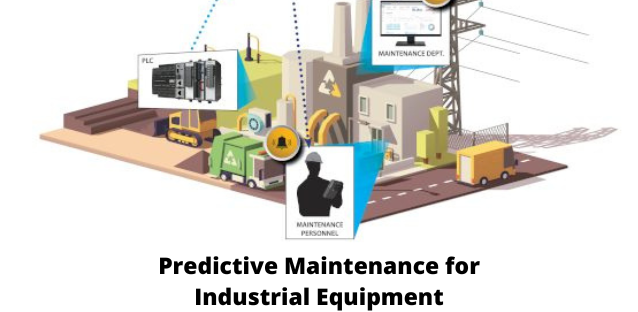Predictive Maintenance for Industrial Equipment
As industrial equipment becomes more and more complex, the need for predictive maintenance becomes more critical. By using predictive maintenance, companies can avoid the costly downtime associated with unexpected repairs. Keep reading to learn more about how predictive maintenance can benefit your company.
Predictive Maintenance Defined
Predictive maintenance (PdM) is the “use of advanced analytics and machine-learning algorithms to detect patterns in data and identify potential failures before they happen.” PdM is intended to improve equipment uptime and reduce costs by allowing for preventive maintenance to be scheduled proactively, rather than reactively. It is a proactive approach to equipment management that relies on the analysis of past performance data in order to predict when an individual component or system is likely to fail. This information can then be used to schedule repairs and replacements before an actual failure occurs, improving overall equipment reliability and uptime. It can be used in different industries. For example, predictive maintenance manufacturing is often commonplace. The manufacturing industry utilizes these solutions and systems for optimal operation. The main benefit of predictive maintenance is its ability to significantly reduce unscheduled downtime by preventing failures from happening in the first place. Predictive maintenance also enables organizations to better manage their resources by allowing them to plan for and budget for upcoming repairs. Additionally, it can help improve safety and product quality by ensuring that critical components are not allowed to fail prematurely.
Types of Predictive Maintenance
There are three types of predictive maintenance: statistical, environmental, and equipment. Statistical predictive maintenance uses historical data to predict when an event is likely to happen again. For example, if a machine has been consistently failing every Tuesday morning at 8 a.m., the statistical model would predict that the machine is likely to fail again at the same time on the following Tuesday. Environmental predictive maintenance uses information about the environment around a piece of equipment to predict when it will fail. For example, if a machine is in an area with high humidity, the environmental model might predict that the machine will fail soon because of corrosion. Equipment predictive maintenance uses data from sensors on or inside a piece of equipment to predict when it will fail. For example, if a sensor detects that vibration levels are increasing, the equipment model might predict that the machine is about to break down.
Predictive Maintenance in an Industrial Setting
In industrial settings, equipment is often subjected to heavy use and wear. To avoid unscheduled downtime and keep production running smoothly, it’s important to have a predictive maintenance plan in place. Predictive maintenance involves using sensors and other diagnostic tools to detect potential problems before they cause an issue. This can be done through periodic inspections or by monitoring the performance of equipment over time. There are a number of different types of sensors that can be used for predictive maintenance, including vibration sensors, oil analysis kits, thermometers, and pressure gauges. By tracking the data collected by these sensors, operators can get an idea of how well the equipment is performing and identify any potential issues before they become serious problems. Having a good predictive maintenance plan in place can help companies save money on repairs and avoid costly outages. It also helps ensure that equipment is running safely and efficiently at all times.
Predictive Maintenance Algorithms Used in Industry
Predictive maintenance algorithms are used in industry today to predict when a piece of equipment will fail. This allows companies to schedule repairs and replacements before an actual failure occurs, saving time and money. There are several different types of predictive maintenance algorithms, but they all rely on historical data to make predictions. The most common type of predictive maintenance algorithm is called a machine learning algorithm. Machine learning algorithms use past data to create models that can predict future failures. Other types of predictive maintenance algorithms include rule-based systems and Bayesian networks. Rule-based systems use pre-determined rules to predict failures, while Bayesian networks use probabilities to predict failures. Each type of predictive maintenance algorithm has its own strengths and weaknesses, so it is important to choose the right algorithm for the job.
Overall, predictive maintenance is an important tool for industrial equipment. By predicting failures, companies can prevent them from happening, saving time and money. Predictive maintenance can also improve safety and equipment reliability.
| Homepage | Click Hear |

